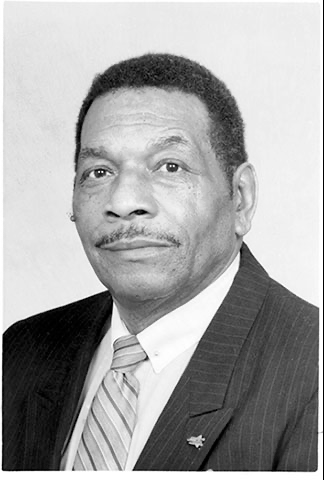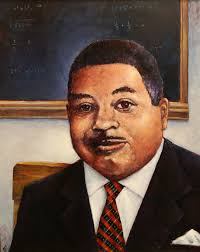By: Crystal Wang '25

Photo Courtesy of William & Mary
With Charter Day recently passed, it’s a good time to look back on the history of William & Mary, both the good and the bad. We’re a school with a long, long history that can’t all be summed up in one article. However, we at the Dog Street Journal hope our selection of notable events properly portrays the changes throughout the College of William & Mary’s history and the role we as a school played on the nation.
Feb 8th, 1693 - The Charter

Photo Courtesy of Swem Special Collections
On this day, the court of King William and Queen Mary signed the Royal Charter that created The College of William and Mary. The Charter established the purpose of the new institution and listed the original board of visitors. Now we celebrate its birthday with Charter Day.
1705 - Wren Building Burned Down Part 1

Photo Courtesy of William & Mary
October 26th, 1705, the Sir Christopher Wren Building (known as just “the College” at the time) caught fire and burned down due to what was probably a badly constructed chimney. The exterior walls were largely okay so William & Mary incorporated them into the restoration partially funded by Queen Anne. This is will be the start of a common thread in the College’s history.
1723 - Brafferton Indian School

Photo Courtesy of Jin Xie '24
2023 marks the 300th birthday of the construction of the Brafferton building which housed the Indian School at the College of William & Mary (yes, that was the official name, no it is not correct terminology by today’s standards). The education of Indigenous Americans was built into the original charter of the college but it wasn’t until the construction of the Brafferton building that William & Mary had a designated place for Indigenous students to study and live. Of course, one must not forget the role that William & Mary had in Indigenous cultural genocide and forced assimilation. But this school was still beneficial to Indigenous people in many ways.
Linda Thomas Green-Field, United Nations Ambassador and guest speaker at Charter Day, put it best: “Students were pushed by the school’s leaders to assimilate and become ‘civilized.’” But we must also recognize the historic nature of this school and the power that Native Americans gained from their education. Brafferton students became translators and diplomats for their communities. And despite efforts to whitewash their culture, Native students held on to their traditions, their language and their sense of self.”
1750 - First Secret Society

Photo Courtesy of Swem Special Collections Research Center
Nov 11th, 1750 saw the establishment of the Flat Hat Club, formally known as the F.H.C Society at the College, the nation’s first secret society. The society’s initials stood for “Fraternitas, Humanitas, et Cognitio,” latin for Brotherhood, Humanity, and Knowledge. This society died out around 1781 with the suspension of academic activity due to the Revolutionary War. It wasn’t until a 1909 discovery of manuscripts between George Tucker (yes, the same Tucker as Tucker Hall) and Thomas Jefferson that knowledge of this society came into light. Today, the William & Mary student newspaper takes its name from the same society.
1776 - First Intercollegiate Fraternity

Photo Courtesy of Colonial Williamsburg
Phi Beta Kappa, the first intercollegiate fraternity in the nation was founded on Dec. 5th, 1776 right here at William & Mary. It was the first honor society to be associated with Greek letters and is still considered to be the most prestigious academic honor society. Three years after the founding of Phi Beta Kappa, both Harvard and Yale established their own chapters. Those schools might now have more clout than William & Mary, but we started the idea of greek letters being associated with fraternities.
1779 - Becoming a True University
Photo Courtesy of William & Mary Law School
This year, the College discontinued its grammar and divinity school and established its law school as well as a professorship in anatomy and medicine and a chair of modern language. It also started an elective system of studies, the first of its kind in the U.S. This can be seen as the time the College truly became an institution of universal study, a university. Many, including the College itself, argue that this school was the first university in the U.S. because it offered universal study. This could also be considered a middle finger to Harvard.
1859 - Wren Building Burned Down Part 2

Photo Courtesy of William & Mary
Feb 8th, 1859, the Wren Building once again caught fire. As far as we at the DoG Street Journal can tell, nobody really knows how or why the building went up in flames again. This fire destroyed practically everything except the brick wall which was incorporated into the third iteration of this building. Some think that the second fire burned the building to the ground and nothing of the original remains, but remnants of the original Wren Building haven't completely died yet.
1861 - Civil War and Wrong Side of History

Photo Courtesy of W&M Special Collections Research Center
At the start of the Civil War, William & Mary closed because most of their staff and students joined the military to fight in favor of slavery. Not really surprising when the institution is built on the back of the enslaved.
1862 - Wren Building Burned Down Part 3

Photo Courtesy of William & Mary
In 1862 after the Battle of Williamsburg, the Union captured the town and took control of the college. On October 9th, 1862, soldiers from the 5th Pennsylvania Cavalry decided to get drunk and set the Wren building on fire for the third time. The building would be rebuilt after the Civil War, leading to its fourth and current iteration. Surprisingly, the exterior wall did survive and is still holding strong.
1865 - William & Mary Reopens

Photo Courtesy of William & Mary
After the Civil War, William & Mary opened its doors to students again with Benjamin S. Ewell as president. This is the same Ewell as Ewell Hall. As for why we didn’t rename the building, the American History Since 1877 class taught by Jeremiah Watkins claims Ewell spent the rest of his life trying to keep the college open and trying to make up for his role in slavery.
1881 - William & Mary Goes Broke and Closes Down

Photo Courtesy of William & Mary
The lack of funding forced William & Mary to close its doors. However, President Ewell continued to ring the Wren Bell at the start of each academic year to keep William & Mary spiritually alive. Say what you will about this school, but we just don’t die.
1888 - William & Mary Re-opens With Aid From the Virginia Assembly

Photo Courtesy of Swem Special Collections Digital Archives
After seven years of closure (in which Ewell continued to ring the bell) the school finally reopened with $10,000 given by the state of Virginia and the Act to Establish A Normal School. Lyon G. Tyler became the president of the College which was basically just the Wren Building at that point. And with this year, William & Mary was resurrected from near death.
1906 - Becoming a Public Institution
Photo Courtesy of American Flags
The Commonwealth of Virginia bought the property operating responsibilities of William & Mary in the Transfer to the State. This officially made William & Mary a public institution.
1918 - Women!

Photo Courtesy of Swem Library Special Collections (Martha Barksdale - member of the first class of female students - also featured in this DSJ article)
William & Mary let in its first female students, becoming the first co-ed institution of higher learning in the state. Don’t get too excited though, the college was in danger of going broke (again) due to a lack of students and thus women were allowed in. Mary Cooke Branch Munford and the college’s president Lyon G Tyler advocated for the enrollment of women to the Virginia Legislature and 24 women were admitted in the fall of 1918. On the bright side, we did this at a time when UVA was still vigorously resisting the idea of female students.
1922 - Asian Students

Photo Courtesy of Colonial Echo
The first Asian student, Pu-Kao Chen was admitted into William & Mary and he graduated in 1923. 2022 saw the celebration of the Asian Centennial and an exhibit at Earl Gregg Swem Library featuring research on the first Asian students at William & Mary.
1937: The First Charter Day is Celebrated and Becomes Tradition

Photo Courtesy of William & Mary Libraries
1951: Black Students
Hulon Willis Sr. M.Ed. '56 pictured left and Portrait of Edward Augustus Travis B.C.L.'54 pictured right.
Photos Courtesy of William & Mary Alumni Association and the William & Mary Law School Scholarship Repository
Hulon Willis (who Willis Hall is now named after) was admitted to William & Mary’s graduate program in the summer of 1954, becoming the first Black student to study at the school. He would graduate with a Masters in Education in 1956. Edward Augustus Travis was also admitted to William & Mary’s law school this year and became the first Black person to graduate from William & Mary in 1954. It did take like 300 years but better incredibly late than never
1966: Earl Gregg Swem Library and School of Education Opens
Photo Courtesy of William & Mary
1968: William & Mary’s Business School Opens
Photo Courtesy of Raymond A. Mason School of Business and Stephen Salpukas
1979: The Virginia Institute of Marine Sciences is Incorporated Into William & Mary
Photo Courtesy of Virginia Institute of Marine Science
2018: William & Mary elects its first female president in Katherine Rowe
Photo Courtesy of William & Mary










Comments